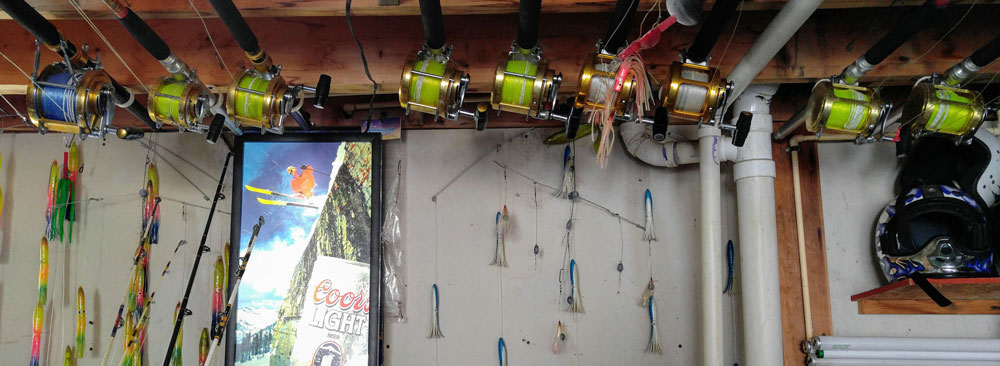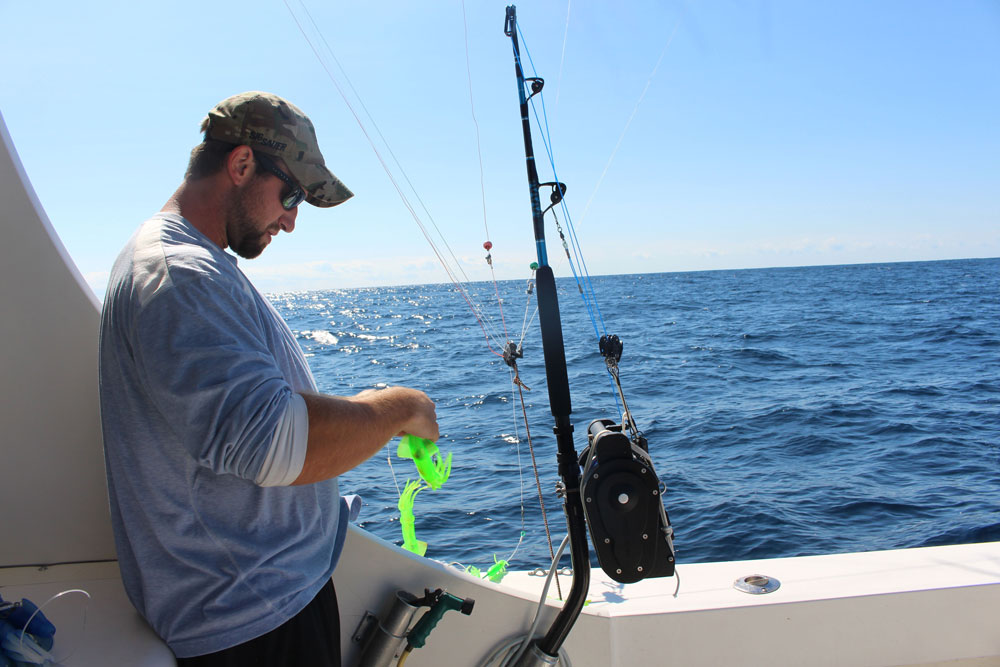Fishing gear maintenance is an important winter chore that will keep you busy when there aren't any near-by fishing shows, and the weather doesn't allow you to get outside and take advantage of any of the Mid-Atlantic's year-round fishing opportunities. Sure, playing with brand new gear is more fun and maybe if you were a really good boy or girl over the past year it's possible Santa left either new tackle under the tree for you. Apparently, he ran out of such goodies before coming down my chimney. Or, maybe fishing over 100 days last year put me on the naughty list. In any case, instead of playing with new gear I'll be spending some time this January getting my old rods, reels, lures and terminal tackle cleaned up and ready for the upcoming season. If you found yourself on Santa's naughty list as well (welcome to the club), here’s how to give your gear a little tender loving care.

We hope your winter tackle maintenance actually began after your final fishing trips. Anglers invest substantial funds in our rods, reels, and tackle, and taking care of that fishing equipment after use is actually where your winter maintenance choirs begin. Hopefully all your tackle was washed off well and dried thoroughly before being stored away.
Rigs and Leaders
Trolling rigs and leaders need to be checked for nicks, or crimps in questionable condition. Along with a visual inspection run your fingers down the line to feel for any damage. If you find any damage replace the line, and if everything passes inspection, wash it with soap and water. Before allowing it to dry use a brush to straighten out any tangled hair on lures and skirts, then file the hooks sharp. Many offshore hooks have a cutting edge to help penetrate the tough mouths on species like billfish or sharks. Other hooks are rounded to a point. Just follow the angle of the hooks when sharpening. Start with a file, and finish off sharpening with a stone. Once sharp, use a red permanent magic marker to coat the filed area which will prevent rust from forming.
Terminal tackle such as swivels, snaps, crimps and other various rigging items hopefully are in prime condition and ready for use. But anything in question should be trashed and replaced. Is the cost of a swivel that does not spin smoothly worth the possibility of it coming apart with a trophy fish at the end of a line? If that hasn't happened to you, great, but I haven’t been so lucky.

Fishing Rods and Reels
Rods and reels should have been cleaned well and stored with the drags backed off after that last trip. If not, now is the time to wash everything again. But before beginning remove those reels from the rods because there is bound to be salt under the reel seat. This leads to corrosion, which leads to new fishing outfits under the Christmas Tree - we hope!
Re-tighten drags so water doesn’t get into them, then use soap with water and give reels a good soapy wash. Not the wash job after a 16-hour day offshore, which doesn't often amount to much more than a dousing, but a more thorough treatment to remove everything in those little nooks and crannies. A toothbrush works well for getting behind clickers, around drag levers, and in tight areas. Once dry, oil and lube the appropriate locations and check that the reels are operating smoothly. The drag should operate without jerking or sticking. If there is an issue with any reels, your mechanical ability dictates if the reel is taken apart on the kitchen table – under a tongue lashing from the spouse – or whether a trip to the local tackle shop is in order. I can say that dismantling a reel such as a Penn International 50 is not difficult. It's getting all those little pieces back together correctly that's the problem.
Assuming the reels are clean, lubricated and ready to go, let’s move on to the rods. That toothbrush also works great for getting between the rod eyes and rod blank when washing. Roller tips should be taken apart so salt deposits that have developed but remain out of sight can be cleaned away. Use a light coating of oil when reassembling. Reel seats no doubt have salt deposits from ocean spray. If there is any pitting, use steel wool or lightly sand it to remove it, then apply a good coating of white grease before placing the reel back on rod. Borrow (steal) a nylon stocking from your still-irate spouse and run it through all rod eyes. Any nicks in the guides will catch on the nylon, alerting you to which need replacement. Once again, your ability dictates who replaces these eyes. But if there are nicks, the eye must be replaced or severe line wear may result.
If saltwater and sun have taken their toll on the rods and they’re looking dull, a new coat of rod varnish might be in order as well. Then start cranking and put your favorite line back on the reels, and attach the appropriate leaders. With your outfits now ready to go, back off the drags (so the drag material doesn’t get compressed) and store everything until your read in the weekly fishing reports at FishTalkMag.com that the first yellowfin of the year have been caught.
And who knows, if we’re all good this coming year, maybe next Christmas the elves will pack a few outfits in the sleigh for you.
- By John Unkart, the author of Offshore Pursuit and Saltwater Tales
Also see:
- Trolling Seasonal Prep
- Winter Gear Maintenance for Kayak Fishermen
- Five Winter Tackle Maintenance Disasters - Don't Do This!
Editor's Note: This article was originally published in December of 2017 and was last updated in May of 2024.